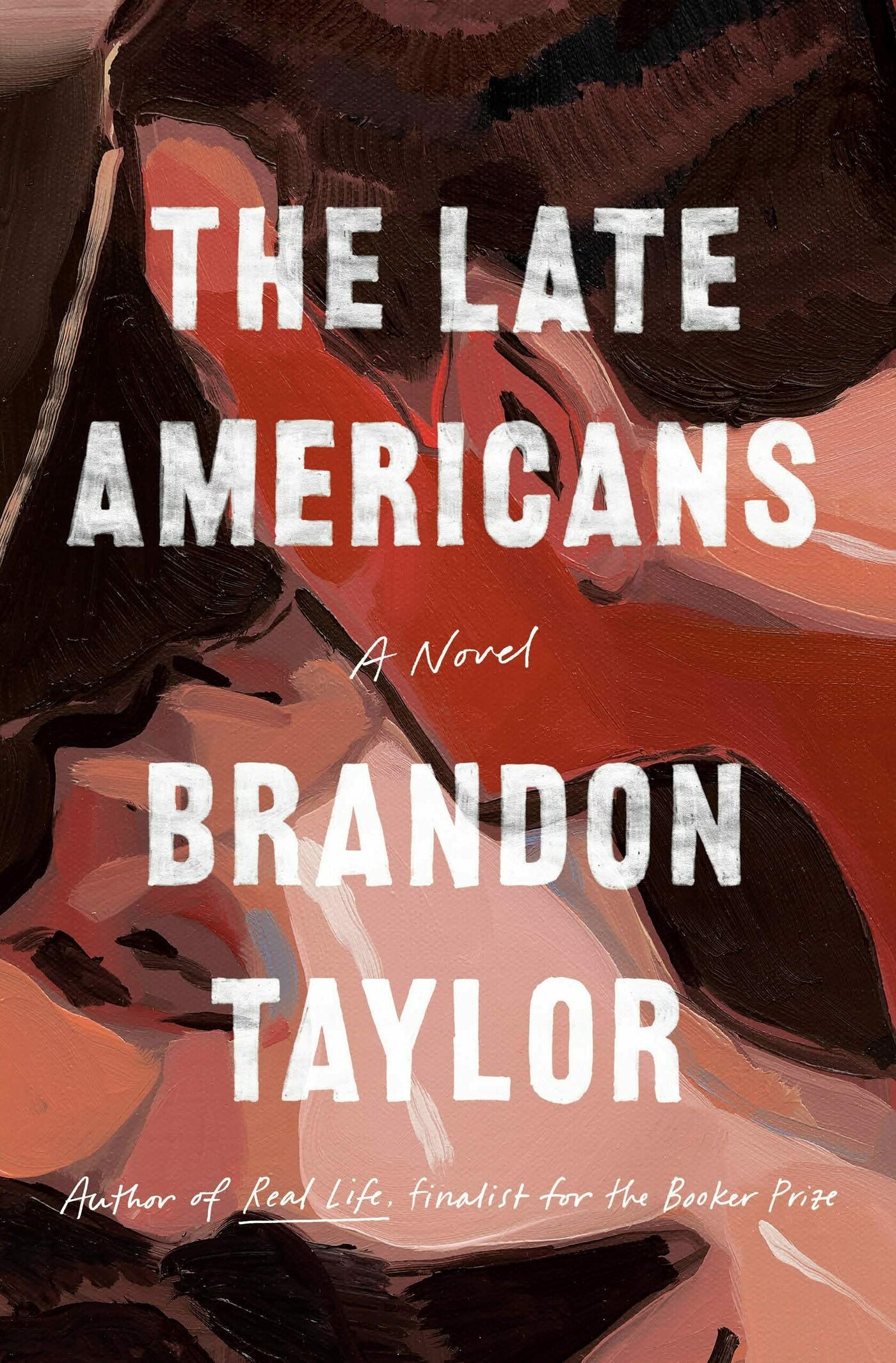‘The Late Americans’ is not just a campus novel


It’s convenient to slot Brandon Taylor’s The Late Americans, along with his debut novel Real Life, into the campus novel category.
But his latest book is more than this. It evokes Milan Kundera’s astute observation in Immortality that the pursuit of a meaningful calling in today’s world is nearly impossible due to the burdens of history and sociopolitical barriers to access.
Taylor deftly explores the myth of youth’s unbound possibilities as it plays out in the face of constraints of time, space, class and wealth disparities by vividly illustrating the intersecting lives of University of Iowa students pursuing master degrees, in artistic as well as STEM-related fields, with the people living in this college town.
Defined by “lateness” — the graduate students’ adolescence prolonged in part by the protective structure of academe, the persistently isolating milieu of 21st century America, and the inexorable conditions of late capitalism — Taylor’s characters, while still in the seemingly untethered stage of self-discovery, are not really free. Oppressed by the lack of time and money, and driven by a series of relentless transitions between economic survival and aesthetic passion, these men and women rarely get to experience joy in their daily pursuits.
Taylor’s setting of the open Iowa landscape both references and poetically subverts the campus novel’s pastoral elements — those that mimic the lush milieu of Shakespeare’s A Midsummer Night’s Dream. While the harsh, wintry Midwestern setting — with its slate-colored sky, dirty, slushy snow in the winter, diseased ash trees — seems more Gothic than Romantic, this barren framing intensifies the characters’ corporeal desires, manifest via their sweaty bodies in overheated, indoor space. Physical intimacy offers the characters temporary respite if not intellectual or ideological solidarity.
In a way, Iowa City is a contradiction — as a college town surrounded by barren, windswept landscape and hilly terrains, it is both coarse and rarefied, peopled by meatpacking plant workers, laborers, artists, writers, forming a racially diverse and sexually fluid population. At the same time, there seems to be little convergence or understanding between the town residents and the students, or among the students themselves.
Seamus, who works as a cook at a local hospice to finance his MFA in poetry, is undone by the hatred and violence inflicted upon him by a gay “townie” during a casual sexual encounter. Seamus’ disdain for his peers’ lack of aesthetic rigor masks his insecurity and corroding shame that contribute to his writer’s block. Fyodor, the meatpacking worker, while an intuitive artist — since he perceives the formal beauty between a well-trimmed cut of meat and that of a modernist painting’s abstract elements — is constantly derided by his vegetarian lover for his “murderous” profession and his lack of appreciation for the theoretical aspects of art.
Regardless, it appears that the cost of facile piety or “aesthetic anger” is mostly borne by the socially disadvantaged — be they laborers or artists. Fyodor’s lover can denounce his meatpacking job while blithely espousing capital punishment. Fatima, a poor barista and struggling dancer, while embracing environmental causes, cannot afford the steep cost of locally sourced food. The most aesthetically sensitive, yet also most pragmatic character, is probably Ivan, a talented ex-dancer who sees art simply as a means to an end. After an injury derailed his promising dance career, Ivan shifts his studies to finance as a way to secure his own, and his elderly parents’, material stability. To pay for university expenses, Ivan decides to produce “arty” porn clips with stylized, hypnotic body movements for mass consumption — thus consciously exploiting the capitalist machine for what he sees as the greater good.
Arguably, many of Taylor’s “late Americans” represent the modern counterparts of characters that populate the novels of Henry James, Edith Wharton, and Theodore Dreiser — those who are shaped by their histories or confined by strict yet undefined social regulations. In this sense perhaps Taylor implies that the modern university experience has failed us, for we have not succeeded in transcending our ideological, social, and economic barriers, even in an open setting for experimental learning.
While Taylor’s characters can be openly cruel to their friends or partners, their unwillingness to be emotionally transparent is not so different from the decorous, convoluted behavior of Gilded Age protagonists. At the same time, the characters constantly strive to become better versions of themselves by embracing an ideal of passionate empathy that goes beyond pity or kindness, by striving to plumb the dark, even unspeakable parts of themselves. In this sense, Taylor seems both more hopeful, and yet more pragmatic than F. Scott Fitzgerald. Many of his characters are not pursuing the green light at the end of Daisy’s dock, but the arduous, Sisyphean climb of self-knowledge.
Thúy Đinh is a freelance critic and literary translator. Her work can be found at thuydinhwriter.com. She tweets @ThuyTBDinh
For all the latest Entertainment News Click Here
For the latest news and updates, follow us on Google News.
